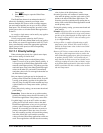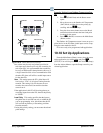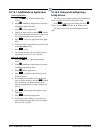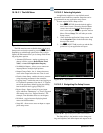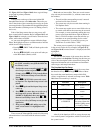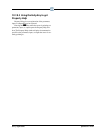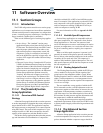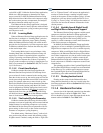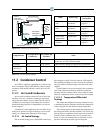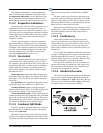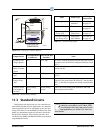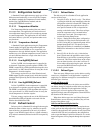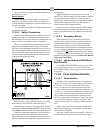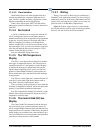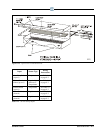
11-2 • E2 RX/BX/CX I&O Manual 026-1614 Rev 4 5-JAN-2013
cycled ON or OFF. Unlike the Suction Group application,
which uses a PID percentage to determine how many
stages to turn ON or OFF, the Enhanced Suction Group
keeps historical data of the effects each compressor stage
has on the suction pressure or temperature, and analyzes
that data to determine which stages to cycle.
The Enhanced Suction Group application is designed
to balance tight control of suction pressure with economic
management of compressor cycling to reduce power usage
and compressor wear.
11.1.3.1 Learning Mode
When an Enhanced Suction Group application runs for
the first time, it undergoes a “Learning Mode” period to
collect data on the compressor stages. During Learning
Mode, the Enhanced Suction Group will control suction
pressure, but it will purposely cycle the compressor stages
in different combinations to measure the effect they have
on the suction input value.
The Learning Mode lasts for several minutes. After
Learning Mode ends, the Enhanced Suction Group will
require up to 24 hours of operation before compressor
cycling is operating at maximum efficiency. If compressor
cycling seems too frequent after 24 hours of operation,
you may reduce compressor cycling by changing the Con
-
trol/Cycles parameter (see Section 11.1.3.3, The Control/
Cycles Parameter).
11.1.3.2 Circuit Load Analysis
Unlike the standard Suction Group algorithm, the
Enhanced Suction Group includes Circuit Setup where
you associate all circuits connected to the suction group.
Once the circuits are set up, the suction group will use the
circuit states to help determine current loads on the suction
group. For example, when one or more circuits go into
defrost, the Enhanced Suction Group determines that there
is less of a load on the suction group than if all circuits
were in refrigeration. With the appropriate circuits associ
-
ated, the Enhanced Suction Group tailors its capacity to
meet the load. Over time, the Enhanced Suction Group
will build and store a
profile for all the different combina-
tions of circuit states encountered in the algorithm.
11.1.3.3 The Control/Cycles Parameter
Unlike the standard Suction Group, which used PID
constants as a means of optimizing suction control and had
limited features for controlling compressor cycle counts,
the Enhanced Suction Group has one parameter with five
preset settings to allow users to alter suction control per
-
formance or compressor cycling frequency.
The default setting, “Moderate Control,” seeks to bal-
ance good suction pressure control with efficient cycling.
If tighter control is needed, setting the field to “Tight Con
-
trol” or “Tightest Control” will increase the application’s
reaction to suction changes, resulting in tighter control
(usually at the expense of more frequent cycling). If fewer
compressor cycles are desired, setting the field to “Less
Cycling” or “Least Cycling” will decrease the number of
cycles but also increase the amount of fluctuation in the
suction pressure.
11.1.3.4 Variable-Speed, Digital Scroll,
and Digital Discus Compressor Support
The Enhanced Suction Group supports variable-speed
compressors similar to the Suction Group application.
When a variable-speed compressor is present, it is the first
compressor stage ON and the last stage OFF, and its
capacity is varied to attempt to correct small fluctuations
in the suction pressure or temperature.
In addition, the Enhanced Suction Group application
supports use of one or multiple Copeland Digital Scroll or
Digital Discus compressors for use as a variable-capacity
compressor. With several Digital Scroll or Digital Discus
compressors, the Enhanced Suction Group will modulate
one of those compressors at a time to control suction pres
-
sure. As compressor capacity is added or removed, the
Enhanced Suction Group may modulate another Digital
Scroll compressor to distribute compressor resources and
solenoid wear.
The operating capacities of the Copeland Digital Scroll
and Copeland Digital Discus compressors are determined
in the same way as a variable-speed compressor, except
the Copeland Digital Scroll and Copeland Digital Discus
controlled by pulse-width modulation (PWM).
11.1.3.5 Floating Suction Control
Floating suction control in the Enhanced Suction
Group behaves identically to the way it works in the Suc
-
tion Group application. Refer to Section 11.1.2.3, Floating
Setpoint Control.
11.1.4 Hardware Overview
An overview of the input and output devices that make
up a Suction Group is shown in
Figure 11-1. These
devices should be wired to input and output boards in the
manner outlined in
Table 11-1 and Table 11-2.



